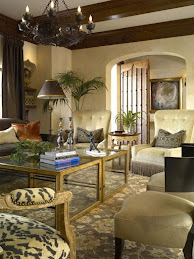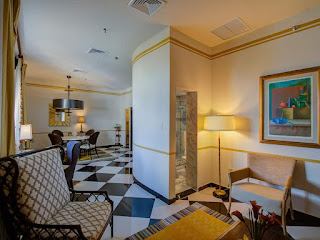A EASY GUIDE TO INTERIOR DECORATION : 10 BASIC RULES OF INTERIOR DECORATION
What is Interior Decoration?
Interior decoration is an art form that
involves creating visually appealing and functional spaces within a building.
It encompasses a wide range of design elements such as color, texture,
furniture, lighting, and accessories to transform an ordinary room into an
extraordinary one. The purpose of interior decoration is to create a
comfortable, inviting, and aesthetically pleasing environment that reflects the
personality and style of the owner.
10 Basic Rules of Interior Decoration:
There are several important principles that interior decorators follow
to create a well-designed space. These include balance, proportion, harmony,
contrast, rhythm, and emphasis.
RULE 1: BALANCE
Balance refers to the distribution of overall visual weight in a room, so every element should be balanced to keep the look perfect. it means that every element in your space must have an equal contribution. For example no dominancy of any element either in quantity or volume
 |
| Living room |
RULES 2: PROPORATION
while proportion refers to the relationship between objects within a space.
RULE 3: HARMONY
Harmony refers to the combination of different elements to create a
cohesive look.
RULE 4: CONTRAST
while contrast involves using opposing elements to create interest.
RULE 5: RHYTHM
Rhythm refers to the flow of the design, and emphasis involves
highlighting certain elements to create a focal point.
RULE 6: COLOR
Color is a crucial element in interior decoration, as it can have a
significant impact on the overall mood and ambiance of a room.
Warm colors such as red, orange, and yellow can create a cozy and
inviting atmosphere, while cool colors like blue, green, and purple can evoke a
sense of calm and relaxation. Neutral colors like beige, gray, and white can
provide a blank canvas for other design elements to shine.
RULE 7: TEXTURE
The texture is another important element in interior decoration. It can add
depth and interest to a space by creating visual and tactile contrast.
Different textures can be achieved through the use of materials such as wood,
stone, fabric, and metal.
RULE 8: FURNITURE DESIGN
Furniture plays a significant role in interior decoration, as it not
only serves a functional purpose but also contributes to the overall style and
atmosphere of a room. The choice of furniture should be based on the intended
use of the space and the design aesthetic. For example, a minimalist design
might call for simple, streamlined furniture, while a traditional design might
feature ornate, decorative pieces.
RULE 9: LIGHTING
Lighting is also a crucial element in interior decoration, as it can
significantly impact the mood and functionality of a space. Different lighting
options such as natural light, ambient lighting, task lighting, and accent
lighting can be used to create different effects and highlight specific design
elements.
RULE 10: ACCESSORIES
Accessories such as artwork, rugs, and decorative objects can be used
to add personality and style to a room. These elements should be chosen
carefully to complement the overall design aesthetic and create a cohesive
look.
CONCLUSION
In conclusion, interior decoration is an art form that involves
creating visually appealing and functional spaces within a building. By
following the principles of balance, proportion, harmony, contrast, rhythm, and
emphasis, interior decorators can create well-designed spaces that reflect the
personality and style of the owner. Elements such as color, texture, furniture,
lighting, and accessories all play a crucial role in creating a cohesive and
aesthetically pleasing environment.
Read Related Blog Posts:
PVC CEILING | FANCY CEILING



